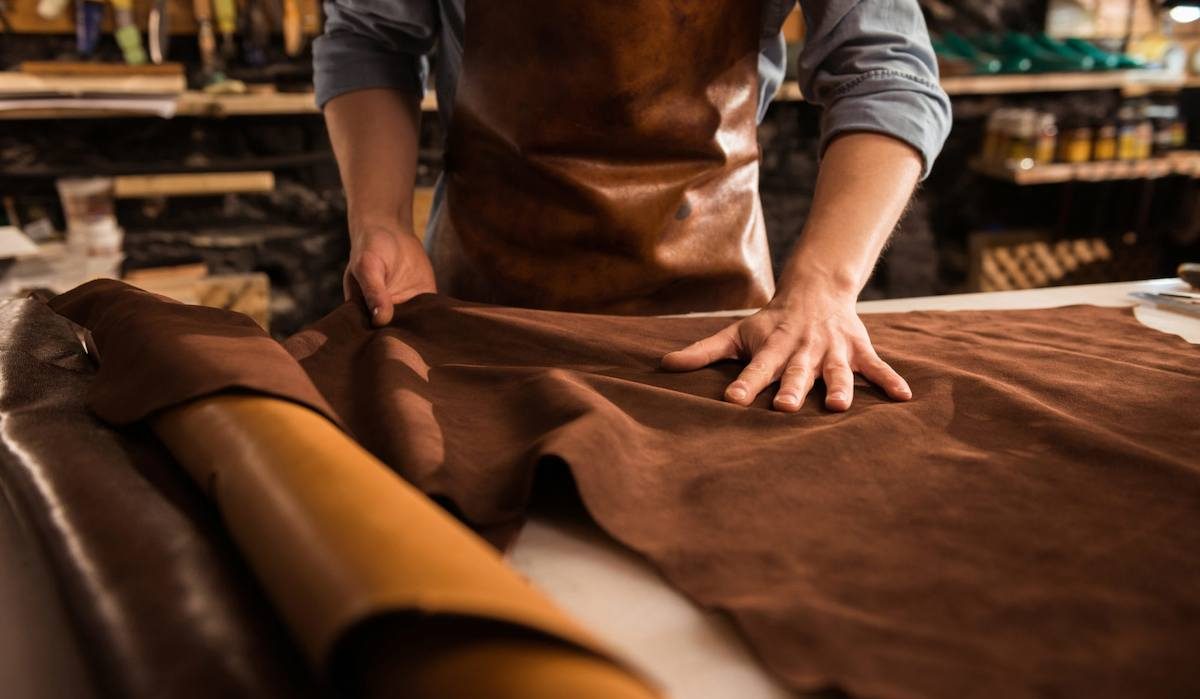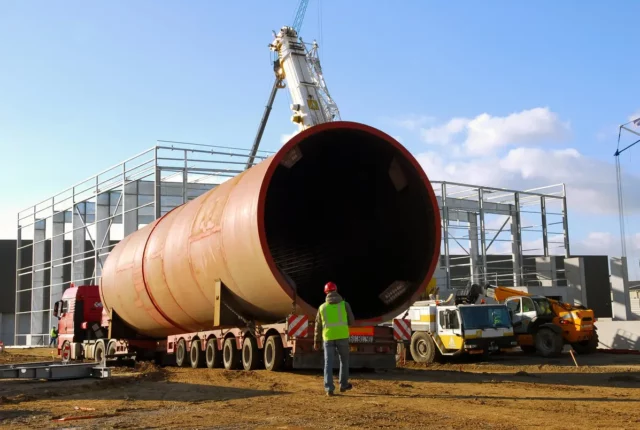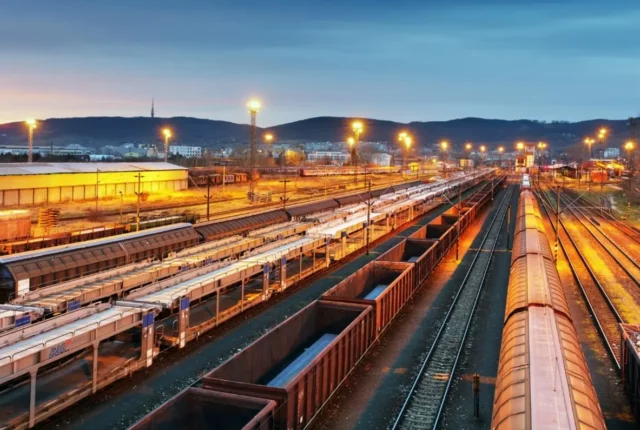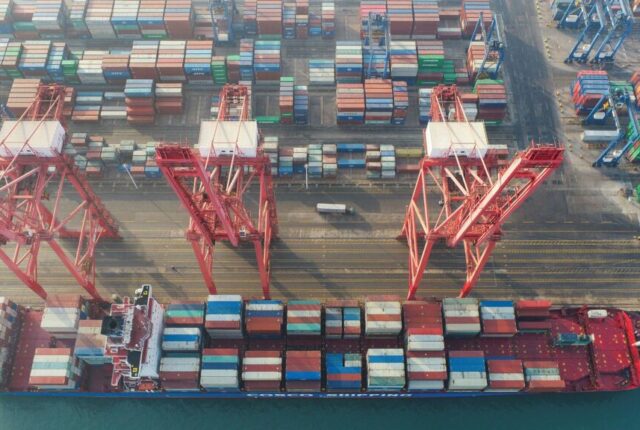
America’s Leather Industry Goes Global but Can’t Dodge Trade War
Before they become couches, bags and shoes, U.S. cattle hides often travel through factories on multiple continents
Hundreds of thousands of salt-cured cattle hides are accumulating in Aaron Tasman’s warehouses—and the clock is ticking.
Tasman’s leather operation includes tanneries in Mexico, a storefront in Kentucky, a leather sales business and hide-processing facilities around the U.S. Ordinarily he sells hides to manufacturers in China, but he halted all shipments last month, worried buyers in the country wouldn’t pay extra for his product during a burgeoning trade war.
Still, he keeps paying for hides from slaughterhouses each week. He isn’t sure how long he can keep it up. Summer is coming, and the heat won’t do Tasman any favors if he can’t get the hides on a ship soon.
“I’ve got employees, and they’re my friends,” Tasman said. “We feel like a real family. I’ve got to get them some hours.”
In the sprawling international leather-goods supply chain, the hides are just the beginning. They eventually become part of couches, wallets, bags, belts and shoes, but the process often involves factories on multiple continents. In a year of tariff whiplash, that has left businesses with two options: Rethink operations, or risk financial peril.
In boot seller Twisted X’s “tariff war room,” Chief Financial Officer Jeff Jones has scrambled to identify a new manufacturing home for the company. Twisted X depends on China for producing the leather work boots it sells, but it stopped importing goods from the country earlier this month. The company is depending on its existing footwear inventory as it hunts for a factory in countries including Cambodia, Bangladesh, Vietnam and India.
“We walk in every day with new questions,” Jones said. “It’s very chaotic right now.”
The U.S. trade imbalance for leather and allied products, including those with faux-leather, is one of the largest among all goods-producing industries. Imports of leather goods by dollar value were more than 10 times as high as exports last year, according to data from the Census Bureau.
China accounted for nearly a third of the industry’s imports. Businesses most exposed to the shifts in the trading relationship are those that ship hides across the Pacific or get finished goods from China.
The U.S. used to be a haven for leather manufacturing, with scores of tanneries scattered across hubs in the Midwest and New York’s Hudson Valley. When David Mitchell was growing up in Milwaukee in the 1970s and ’80s, he said the area was home to more than 20 tanneries, which processed, cleaned, tanned and finished hides into leather. Now, there are only four.
“The golden age of leather tanning in the U.S. is behind us,” said Marshall Baird, senior vice president at Weaver Leather, which manufactures goods for the equestrian industry and distributes leather. “It’s not the easiest business to get into. It’s as much art as it’s science. It’s a dirty, messy process.”
The Trump administration has said that adding duties on imports will spur a rise in domestic manufacturing. U.S. tanneries could benefit from an uptick in orders. But many of the hardest-hit businesses in the supply chain aren’t the companies that buy leather from tanneries, but rather those that purchase finished leather goods from China, like Twisted X. And those businesses aren’t turning from Chinese to American factories—they’re shifting to other foreign producers in the hunt for reduced costs.
After hides are tanned, companies like Greg Cooper’s Texas Leather Trim ordinarily truck them to a warehouse. When Trump’s 25% duties on imports from Mexico were about to go into effect, Cooper had $100,000 of leather traveling from a Mexican tannery to his Texas distribution site. Cooper stalled the truck near the border until Trump called off those tariffs.
Now, Cooper tries to keep track of the minute-to-minute trade-war developments, and spends part of his days adding tariff charges to invoices. He is fielding worried phone calls from industry peers about how to reduce their exposure to China, a process he started during Trump’s first term.
“The footwear manufacturers that still produce there are struggling. It’s a mass exodus,” he said. “Everyone’s looking for the next country.”
Saddleback Leather Co. has a sprawling supply chain for its leather briefcases, belts and duffel bags. The hides come from Scandinavia, the leather is tanned in Italy, the products are manufactured in Mexico, and the finished goods are sold in the U.S., said Dave Munson, Saddleback Leather’s owner. For shipments to international buyers, Munson is preparing to cut out the U.S. altogether, shipping goods directly from the factory in Mexico to their foreign destinations.
Smaller leather-goods businesses that sell footwear, chains, purses and cowhide rugs said they have noticed an uptick in store traffic as consumers race to pick up their latest pair of cowboy boots before costs rise. Several said they are planning to keep prices down and let tariffs eat into their margins.
Alcala’s Western Wear is relying on its hefty inventory of cowboy boots to buy time. And even if there are longer-term tariffs on Mexico, where the store imports many of its boots, the Chicago-based business doesn’t plan to shift production.
“We are from Mexico, and we will always support them,” said Mani Alcala, marketing manager for the company. “The products that come from Mexico are dear to us. We will never get rid of them.”
Business owners are hoping their inventories last through the storm, and that trade tensions ease. Alcala pointed to a heightened interest in all things Western as a tailwind for the business.
Matt Bressler, vice president at Pennsylvania tannery Wickett & Craig, said tariffs on imported leather could give him a leg up over competitors in Mexico. But there is another concern: Would consumers flock to leather in an economic downturn?
“People are only going to buy luxury leather goods when they’re feeling good about things,” he said. “That’s just the way it is.”
America’s leather industry is feeling the strain of the ongoing trade war, with tariffs impacting costs and freight logistics. These challenges are reshaping supply chains and forcing businesses to rethink sourcing and distribution strategies.
Source: Article






